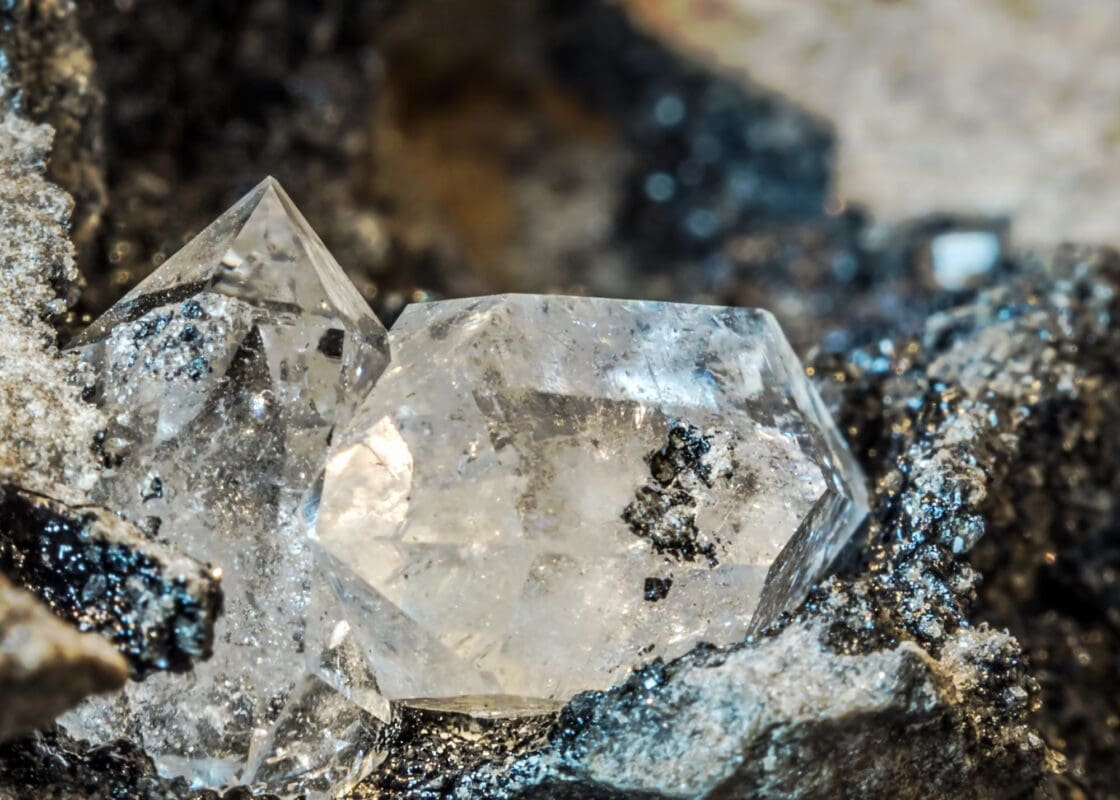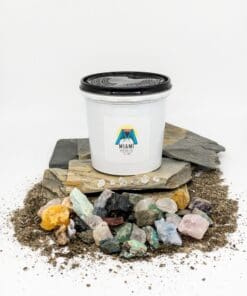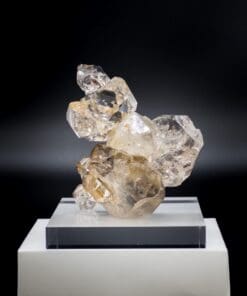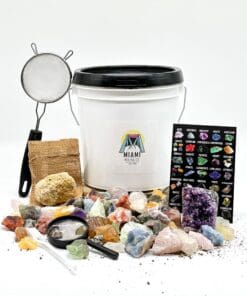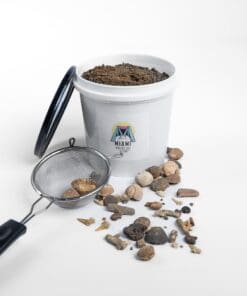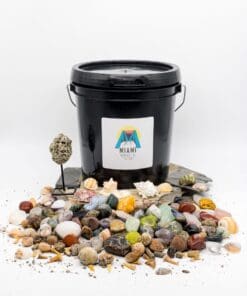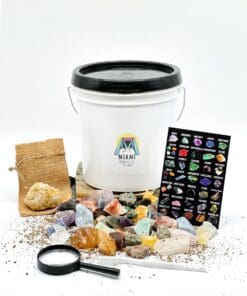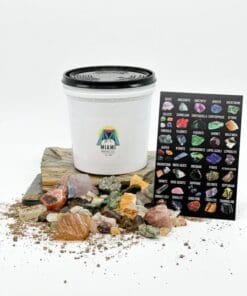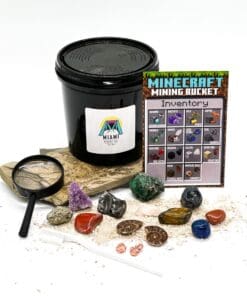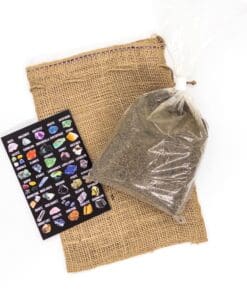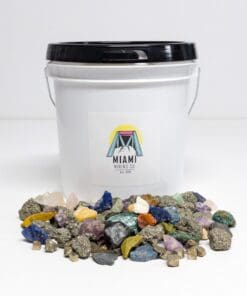Gem Mining New York: Digging Deep into the State’s Gemstone Treasures
Gem mining in New York might not be the first activity that comes to mind when you think of the Empire State, but it is a treasure trove waiting to be discovered by those who know where to look. From the Adirondacks to the Hudson Valley, New York offers myriad opportunities for amateur gemologists and seasoned rock hounds alike. In this guide, we’ll unearth the gem mining potential of New York and help you embark on your own sparkling adventure.
The Most Popular Gemstones in New York
New York, with its rich geological history, boasts a variety of gemstones. While some of these stones are more commonly found, others are rarer treasures that collectors and enthusiasts seek. Here’s a closer look at some of these dazzling finds:
Rare Gemstones in New York:
| Gemstone | Description |
|---|---|
| Herkimer Diamond | Not a true diamond, but a double-terminated quartz crystal renowned for its exceptional clarity. |
| Hiddenite | A greenish spodumene variety, it’s prized for its translucent glow. |
| Labradorite | Known for its captivating play-of-color, often displaying vibrant blues and greens. |
| Balmat Fluorite | A unique green fluorite from the Balmat-Edwards mining district. |
| Star Rose Quartz | A variety of rose quartz, distinguished by its asterism or star-like pattern. |
Common Gemstones in New York:
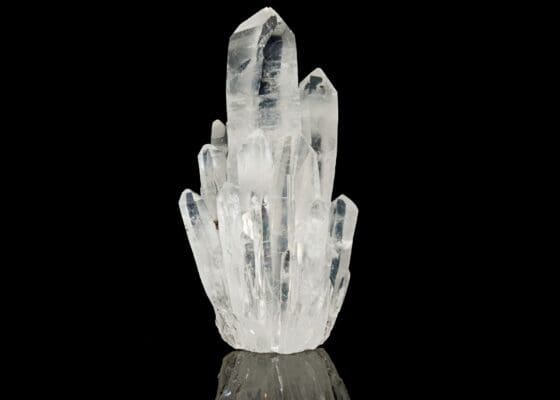
| Gemstone | Description |
|---|---|
| Garnet | New York’s state gem, found especially in the Adirondack Mountains. |
| Quartz | Found in various forms and colors throughout the state. |
| Calcite | A carbonate mineral often found in limestone regions. |
| Pyrite | Often referred to as “fool’s gold” due to its metallic luster and brass-yellow hue. |
| Talc | Softest mineral on Earth, found in several locations in New York. |
| Magnetite | An iron oxide mineral, it’s one of the primary sources of iron ore. |
| Tourmaline | While less common than some others, various colors of tourmaline can be found in New York. |
| Dolomite | Often found in sedimentary rock sequences, it’s used in construction and as a soil conditioner. |
| Celestine | Blue crystals often found near Chittenango Falls. |
| Selenite | A variety of gypsum, it’s cherished for its transparent and luminous nature. |
Each of these gems tells a unique story, offering a window into the geological processes that shaped New York over millennia. Whether you’re on the hunt for the rarest of treasures or looking to start a collection with more common finds, New York’s landscape offers a gem-filled adventure.
Top 10 Gem Mining Locations in New York

- Barton Garnet Mine, North River: One of the world’s premier garnet deposits, the Barton Mine offers both history and hands-on mining experiences. Usually operating from June through mid-October, there’s a fee associated with digging, with children often receiving a discount. Guided tours are also available, providing a rich narrative of the mine’s significance.
- Ace of Diamonds Mine, Middleville: Quartz enthusiasts, especially those chasing the famous “Herkimer Diamonds,” will be delighted with this location. Open daily from April to October, the mine charges a fee based on age, with equipment rentals available on-site.
- Tilly Foster Mine, Brewster: This mine offers a cornucopia of minerals ranging from garnet to tourmaline. While access might be limited at times due to its historical significance, occasional group tours and events allow mineral collection. It’s best to check their schedule and any associated fees before planning a visit.
- Samson’s Beach Black Sand Deposit, Pierrepont: Particularly known for its fine gold and garnet-rich black sand, this location is great for panning. Open all year round, it’s essential to consult local regulations regarding gold panning activities.
- Balmat-Edwards Zinc District, St. Lawrence County: This region has been a significant source of zinc, but associated minerals like tremolite can also be found. Always seek permission from mining companies or landowners before collecting.
- St. Lawrence County Fluorescent Rock Site: A paradise for those who love fluorescent minerals, this site offers public collecting tours for a fee, typically on weekends from May to October.
- Rose Road Pegmatite, Pitcairn: For those on the hunt for tourmaline and beryl, this site is perfect. Collecting is usually allowed for a fee, but it’s essential to check operating dates and hours in advance.
- Crystal Grove Diamond Mine, St. Johnsville: A hotspot for quartz crystals, especially the double-terminated “Herkimer Diamonds.” Open from mid-April to mid-October, there’s a daily fee with discounts available for extended stays.
- Walworth Quarry, Wayne County: Famous for its stunning celestine crystals, the quarry occasionally organizes field trips for collectors. As it’s a working quarry, always ensure you’re visiting on designated days.
- Hunt’s Minerals and Crafts, Prattsville: While not a traditional mine, this site offers a dig-your-own experience from their mineral-rich spoils. Open from May to October, there’s a per-bucket fee for those wanting to sift through and find their treasures.
Each of these locations offers a unique experience, whether you’re a seasoned rockhound or a family looking for a memorable outing. However, always verify operating hours, fees, and any regulations before heading out to ensure a seamless gem-hunting adventure.
History of Gem Mining in New York
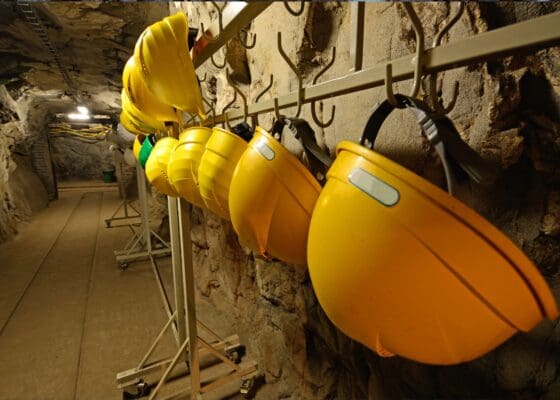
New York’s gem mining history is as layered and intriguing as the very soil beneath its residents’ feet. Gem mining in the Empire State dates back centuries, intertwining with the lives of Native Americans, European settlers, and later, industrial magnates who saw the potential of the state’s mineral wealth.
Long before the establishment of mines as we know them today, Native Americans were the state’s first miners. They recognized the value of certain minerals, such as quartz and garnet, for their beauty and their utility in crafting tools and weapons. The Native Americans’ intimate knowledge of the land and its bounties was profound, setting the stage for later commercial mining operations.
The 19th century was a pivotal period in New York’s gem mining history. The state experienced a mining boom, particularly in the Adirondack region, where the vast reserves of garnet were discovered. These dark red gemstones not only became a source of pride for New York but also catalyzed a burgeoning industry that attracted global attention. The garnet’s abrasive qualities made it highly sought after for industrial purposes, marking the transition from gems as mere ornamental entities to valuable industrial commodities.
Apart from garnet, the discovery of “Herkimer Diamonds” in the late 18th century in the Mohawk Valley region added to New York’s mineral allure. These double-terminated quartz crystals, renowned for their clarity and unique structure, drew both entrepreneurs and hobbyists alike, establishing New York as a central hub for quartz mining.
Not all of New York’s gem mining history was driven by industry, though. The state’s scenic beauty, coupled with its mineral richness, gave rise to recreational mining. Families and rockhounds began to see the potential in fossicking, converting what was once a primarily commercial activity into a beloved pastime.
From the historical trade routes of Native Americans, trading crafted garnet pieces, to the bustling mines of the 19th century and the family-friendly mines of today, New York’s gem mining journey is a testament to its geologically rich heritage and the enduring human spirit of discovery.
Gem Mining Regulations in New York

Navigating the world of gem mining in New York requires an understanding of its regulations, which ensure that both the environment and the interests of prospectors are safeguarded. New York State’s Department of Environmental Conservation (DEC) plays a crucial role in regulating and monitoring mineral collecting activities to ensure sustainable practices and minimal ecological impact.
Firstly, the most critical regulation to understand is the distinction between private and public lands. A majority of New York’s mineral-rich areas are on private property. This means that anyone interested in mining or collecting minerals must obtain explicit permission from the landowner. Trespassing can result in significant fines and even legal action. It’s essential to respect private lands and understand boundaries before embarking on a gem mining expedition.
On public lands, where mineral collection is allowed, there are clear restrictions on the volume and type of materials that can be collected. Often, these rules stipulate that the collected minerals are for personal use and not for resale. This ensures that hobbyist collectors don’t inadvertently transform into commercial operations, putting undue pressure on natural resources.
Additionally, the use of heavy machinery or explosives is strictly prohibited for individual collectors. Tools are generally restricted to hand tools like hammers, chisels, and sieves. Such limitations ensure that the environmental footprint of gem mining remains minimal.
Certain areas, especially those of ecological or historical significance, might be off-limits entirely. For instance, State Parks, Forest Preserves, or areas designated as wilderness often restrict or prohibit mineral collection. Prospective miners should always verify the specific regulations of an area before starting their expedition.
Permit requirements also come into play, especially in areas managed by the state or federal government. While casual collection for personal use might not require permits in many areas, more extensive operations or collection for commercial purposes often necessitate official permission.
Environmental considerations are paramount. Collectors are always encouraged to adhere to the “Leave No Trace” principles, which include refraining from digging up vast areas, disturbing local wildlife, or leaving behind waste.
In essence, while New York offers abundant opportunities for gem enthusiasts, it’s imperative to approach the activity with an informed and respectful mindset. Understanding and adhering to regulations not only ensures a hassle-free experience but also guarantees that New York’s gem-rich landscapes remain pristine for future generations.
Necessary Tools and Equipment for Gem Mining in New York
Gem mining, whether pursued as a hobby or a more intensive endeavor, requires the right set of tools. While the specific nature of each site in New York may warrant particular equipment, there are universally essential items that prospectors should consider. These tools not only maximize your chances of unearthing treasures but also ensure a safe and comfortable experience.
1. Screening and Classifying Tools: Reveal those hidden treasures!
Description: When searching in areas with loose soil or sediment, a sieve or screen can be instrumental. By placing soil or gravel into the sieve and shaking it, smaller particles fall through, potentially revealing gemstones.

🛒 Explore Top Screening Sets on Amazon
2. Shovels and Trowels: Digging deep or just scratching the surface?
Description: For digging deeper into the earth or moving significant amounts of dirt, shovels are essential. Trowels are perfect for more delicate or precise work.

🛒 Find Quality Shovels and Trowels on Amazon
3. Picks and Hammers: The backbone of any gem hunting endeavor.
Description: These are fundamental tools for any gem miner. A rock hammer, with one flat and one pointed end, helps break apart rocks and sediment, revealing hidden gems. Chisels, especially those with a flat edge, are great companions to hammers, assisting in more precise breaks.

🛒 Check Out Best Picks and Hammers on Amazon
4. Buckets: Your trusted companion for carrying treasures.
Description: Having a sturdy bucket or two is useful for collecting larger specimens or for sifting through soil and sediment in search of smaller gems. Smaller containers or pouches can store your valuable finds, keeping them safe from damage.
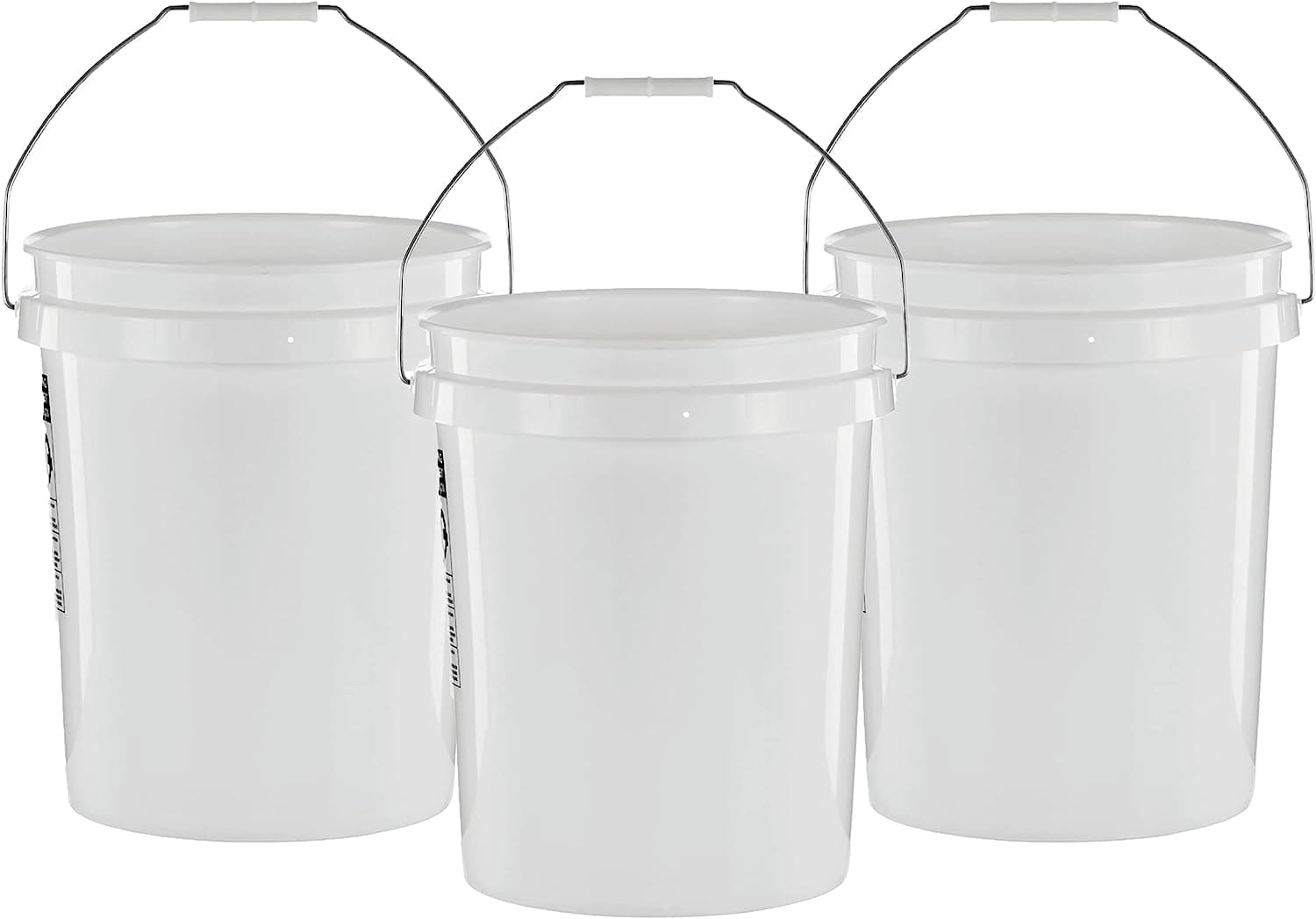
🛒 Shop for Reliable Buckets on Amazon
5. Magnifying Glass: Every detail counts!
Description: This magnifying tool helps in closely inspecting potential gems, ensuring you don’t overlook small but valuable stones. It’s also beneficial for identifying inclusions or other distinguishing features in your finds.

🛒 Grab Your Magnifying Glass on Amazon
6. Guidebooks and Field Guides: Knowledge at your fingertips.
Description: A field guide specific to New York’s gemstones can be invaluable. It assists in identifying your finds and provides insights into where specific minerals might be prevalent. A magnifying glass can help closely inspect and identify smaller or more intricate specimens.

🛒 Discover the Best Field Guides on Amazon
7. Containers and Bags: Organize, store, and flaunt your finds.
Description: As you collect specimens, having durable bags or containers prevents damage to your finds and makes it easier to carry them.

🛒 Shop for Storage Solutions on Amazon
8. First Aid Kit: Better safe than sorry!
Description: While we hope it remains unused, a basic first aid kit is crucial. It should include bandages, antiseptics, and other essentials for treating minor injuries.

🛒 Secure Your First Aid Kit on Amazon
In conclusion, preparing with the right tools and equipment not only enhances your gem mining experience but ensures it’s conducted safely and efficiently. Investing in these tools and being familiar with their use can make the difference between an ordinary outing and a successful treasure hunt.
Tips and Tricks for Successful Gem Mining in New York

Gem mining is as much about patience and passion as it is about skill and knowledge. New York, with its vast mineral diversity, offers plenty of opportunities for both the seasoned collector and the novice enthusiast. To make your adventure both enjoyable and rewarding, here are some insightful tips and tricks:
1. Research Before You Head Out: Familiarize yourself with the specific gemstones native to the area you’re planning to visit. Knowing what you’re looking for can greatly increase your chances of success. Reading up on the geology and mining history of the area can also provide valuable insights.
2. Start Early: The early bird not only gets the worm but also the gemstone! Starting early allows you to make the most of daylight hours and often provides cooler temperatures, which can be especially advantageous during warmer months.
3. Join a Local Rockhound Group: Local gem and mineral clubs often organize group trips to mining sites. Being part of such expeditions offers the benefit of shared knowledge, experience, and tools.
4. Follow the Water: Streams and rivers can naturally erode the earth, revealing hidden gemstones. Moreover, these waterways often transport gems from their original location, depositing them downstream. So, keep an eye out for sparkling treasures in shallow riverbeds.
5. Work Methodically: Instead of digging randomly, choose a spot and work methodically. This ensures you cover more ground efficiently and minimizes the chances of missing out on hidden gems.
6. Care for the Environment: Always remember to fill in any holes you dig and pack out any trash. This ensures that the sites remain accessible and in good condition for future gem hunters.
7. Dress Appropriately: Wear sturdy shoes and comfortable clothing that you don’t mind getting dirty. Depending on the terrain, ankle-high boots might offer the best support and protection against sharp rocks and debris.
8. Stay Safe: Always let someone know where you’re going and when you plan to return. Also, avoid mining alone in remote areas. Carry a whistle, a basic first aid kit, and plenty of water.
9. Keep Realistic Expectations: While finding a precious gemstone would be thrilling, it’s essential to remember that the experience, the connection with nature, and the thrill of the hunt are equally valuable.
10. Document Your Finds: Keeping a journal of your finds, with photographs and descriptions, can be both fun and educational. It’s a way to track your progress, learn from each outing, and share your experiences with others.
By following these guidelines, gem mining in New York can become more than just a hobby—it can be an exciting journey, filled with discoveries, learning, and unforgettable memories.
Handling Your Gemstone Finds

After the exhilarating rush of discovering gemstones, the next crucial step is to handle, care for, and showcase your treasures appropriately. These stones, shaped by nature over millennia, deserve a touch of tender love and care to truly shine. Here’s a guide to managing your New York gemstone finds:
1. Cleaning Your Gems: Gently washing your gemstones can remove dirt, clay, or sediment. For most stones, lukewarm water, a soft brush, and mild detergent will suffice. However, be cautious; some gemstones can be sensitive to drastic temperature changes or chemicals.
2. Proper Storage: Store your gemstones individually to prevent scratching. Soft, fabric-lined boxes or pouches are ideal. For more delicate or rare finds, consider investing in padded gem jars.
3. Cataloging and Labeling: For the more organized gem enthusiast, maintaining a catalog can be both educational and satisfying. Label each gem with details like where and when it was found, its type, and any unique characteristics. This adds a personal touch and a historical context to your collection.
4. Displaying Your Finds: While storage is practical, displaying your gemstones allows you to share their beauty. Glass-fronted display cases, shadow boxes, or even simple stands can turn your home into a mini-museum.
5. Getting Gemstones Appraised: If you believe you’ve found something truly valuable or rare, it might be worth having it appraised. Professional gemologists can provide insights into your gem’s quality, rarity, and potential market value.
6. Gem Cutting and Polishing: Raw gemstones often hide their true beauty beneath a rough exterior. If you’re interested in jewelry-making, consider getting some of your finds cut and polished, transforming them from raw stones into sparkling jewels.
7. Respect Fragile Gems: Some gemstones can be fragile or sensitive to light, heat, or moisture. Research the specific care guidelines for each type of gem you find to ensure they remain in pristine condition.
8. Continuous Learning: Gem handling and care is a vast field. Books, courses, or workshops on gemology and lapidary arts can further deepen your understanding and appreciation of your finds.
9. Seek Community Input: Join online forums or local gem and mineral clubs. Sharing pictures and stories of your finds can bring insights from more experienced collectors about handling specific gems.
10. Insurance: For particularly valuable collections, consider getting them insured. This protects your investment and offers peace of mind.
In essence, your gemstone finds are a testament to the earth’s history and your personal journey of discovery. Giving them the care and attention they deserve ensures they continue to shine brightly, telling their stories for generations to come.
Famous Gemstone Finds in New York
The Empire State has a rich gemological history, with many significant discoveries that have made headlines and even found their way into renowned collections and museums. These famous finds not only inspire modern-day treasure hunters but also weave an intricate tale of New York’s geologic past.
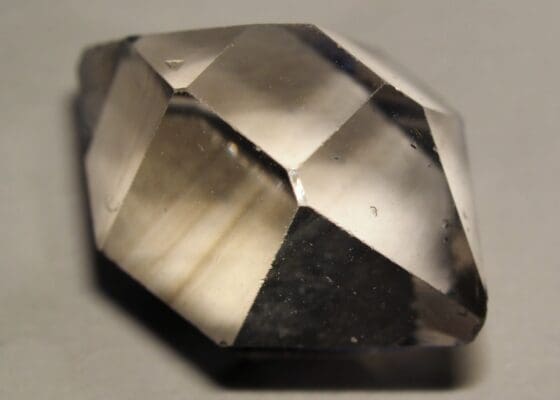
1. The Herkimer Diamond: Perhaps the most famous gemstone associated with New York, the Herkimer Diamond isn’t a true diamond but rather a double-terminated quartz crystal. These crystals are renowned for their clarity and unique formation and are primarily found in Herkimer County.
2. The Garnet Mines of the Adirondacks: New York’s state gem, garnet, has had significant discoveries, especially in the Adirondack Mountains. Barton Mine, in particular, has produced garnet specimens of remarkable size and quality.
3. Moonstone from Staten Island: While not as globally famous as some other finds, local collectors treasure moonstones discovered on the beaches of Staten Island. These shimmering stones have a unique play-of-color that captures the imagination.
4. Balmat Zinc Mines Fluorite: The Balmat-Edwards mining district is renowned for its unique green fluorite specimens. These fluorites, distinct for their color and crystalline structure, have garnered attention from collectors worldwide.
5. Hiddenite of the Hudson Valley: A variety of spodumene, hiddenite is a green gemstone that’s relatively rare. Several specimens have been found in the Hudson Valley region, piquing interest among gem enthusiasts.
6. Star Rose Quartz of St. Lawrence County: This particular variant of rose quartz, known for its asterism (star effect), has made notable appearances in the region, adding to New York’s diverse gem portfolio.
7. Tourmaline Treasures: New York has seen various tourmaline discoveries, with colors ranging from luscious greens to deep pinks. These finds have been especially prevalent in pegmatite deposits throughout the state.
8. Labradorite in the Adirondacks: Known for its mesmerizing play-of-color, labradorite specimens from the Adirondacks have become sought-after for their vibrant displays of blue and green.
9. Celestine from Chittenango Falls: In the limestone quarries near Chittenango Falls, collectors have unearthed beautiful blue celestine crystals, adding another dimension to New York’s gemological repertoire.
10. Beryl Varieties: While not as widespread, several beryl varieties, including aquamarine and heliodor, have been sporadically found in New York, further testifying to its geologic diversity.
These remarkable discoveries serve as a testament to New York’s rich mineral wealth and the endless possibilities that await those who embark on the gem hunting journey. They inspire hope, persistence, and curiosity, echoing the sentiment that treasures lie just beneath our feet, waiting to be unearthed.
Additional Gem Mining Opportunities
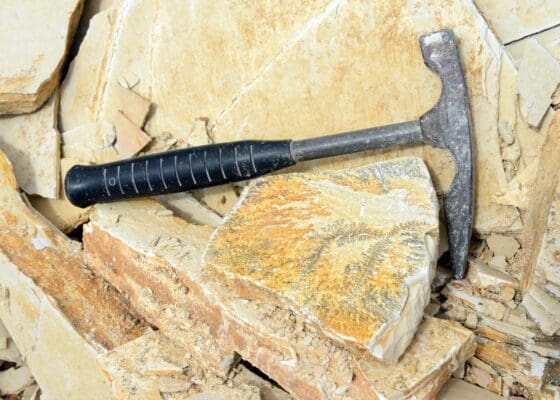
Venturing beyond New York can open up a trove of new gem mining possibilities. Neighboring states, each with their unique geological landscapes, offer a diverse range of minerals and gemstones to discover. Here’s a glimpse into what these states hold:
1. Pennsylvania Gem Mining: Known for its varied mineralogy, Pennsylvania boasts finds such as quartz crystals, garnets, and even the occasional tourmaline in its diverse terrains.
2. New Jersey Gem Mining: Beyond the famed zeolites, New Jersey has been a source of fluorescent minerals, garnets, and more, especially around the Franklin area.
3. Connecticut Gem Mining: The state is famous for its garnet and tourmaline varieties, with a smattering of beryl deposits adding to its charm.
4. Vermont Gem Mining: Garnets and beryl, especially aquamarine and golden beryl, are among Vermont’s prized offerings.
5. Massachusetts Gem Mining: From the stunning rhodonite deposits to the fascinating specimens of beryl, Massachusetts holds myriad wonders for the gem enthusiast.
Exploring these neighboring states not only offers new gem hunting territories but also a deeper understanding of the rich geological tapestry of the northeastern U.S. Whether you’re expanding your collection or simply seeking new adventures, these states hold the promise of untold treasures.
Delve into the ultimate gem mining resource – check out our Gem Mining Near Me guide!
Discovering Treasures, Near and Far
Gem hunting in New York encapsulates a journey like no other, fusing the thrill of exploration with the magic of unearthing nature’s buried wonders. From the shimmer of the Herkimer Diamond to the deep hues of garnets from the Adirondacks, every discovery tells a story of eons gone by, evoking a sense of wonder and connection to the Earth.
However, while the allure of the outdoors is undeniable, there are moments when convenience wins the day. For those times, or for those unable to make the journey to New York’s gem-laden terrains, there’s a delightful alternative: the Gem Mining Kit. These kits bring the excitement of gem prospecting to your very doorstep, offering a curated collection of rough gemstones waiting to be sifted, sorted, and admired. Whether you’re in the heart of the city or the comfort of your living room, the quest for treasures is always within reach.

